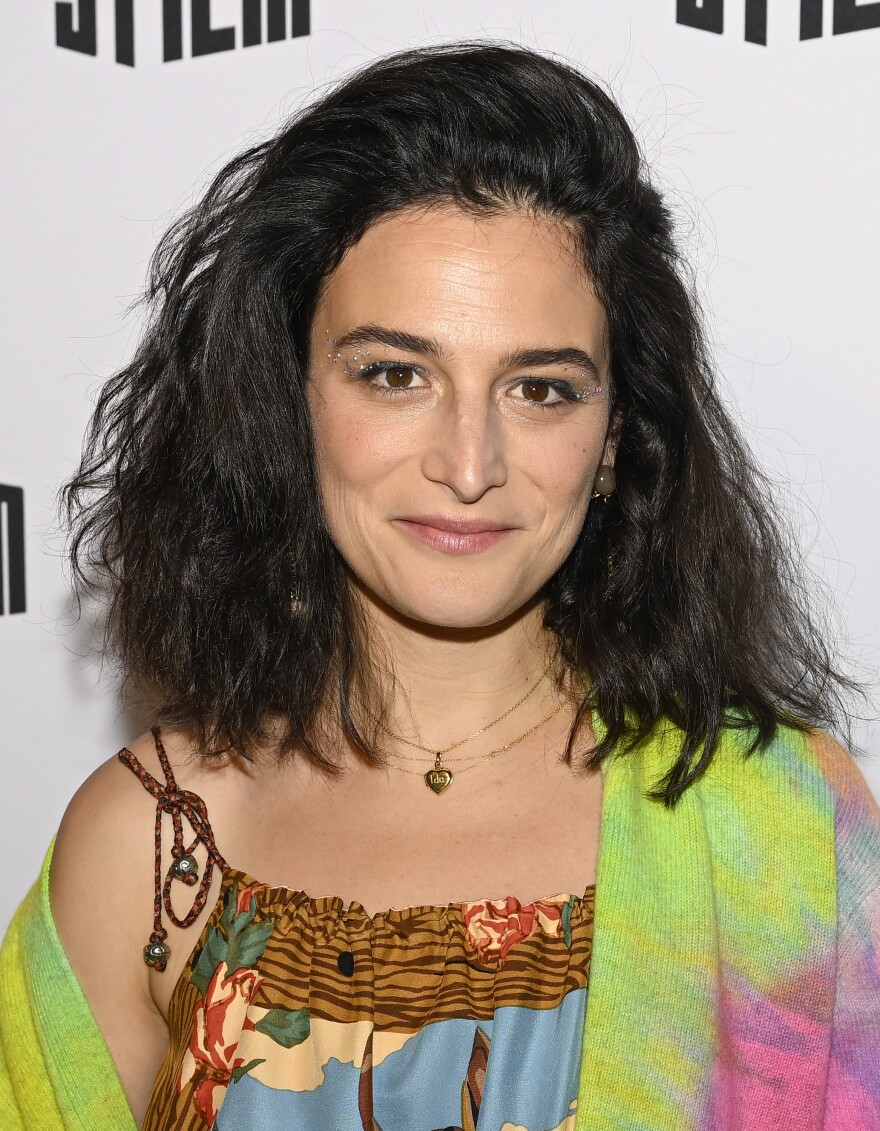Updated July 13, 2022 at 3:52 PM ET
Marcel the Shell was born from a moment of frustration. More than a decade ago, actress Jenny Slate went to a friend's wedding with her then-boyfriend, filmmaker Dean Fleischer Camp. The couple, along with several of their friends, decided to stay in one hotel room to save money, creating a less-than-ideal situation.
"It was very cramped, and I just sort of started to — I don't know, it reached the end of my patience," Slate says.
But rather than storming out or shouting in anger, something unexpected happened: Slate found herself asking everyone to clean up in a little voice. Fascinated by the soft and whimsical voice that had emerged on their trip, Slate and Fleischer Camp continued to develop the character of Marcel in their New York apartment, with Fleischer Camp tinkering with several prototypes for a body until he finally settled on the character's now-famous form: A tiny seashell with no arms, one googly-eye, and a pair of off-brand Polly Pocket shoes.

It wasn't long before the world fell in love with Marcel too. Slate and Fleischer Camp, who at the time was on a deadline to create a short film for a friend's comedy show, uploaded a three-minute video to YouTube that went viral in 2010. The success of the film led to the creation of two more short movies, a pair of children's picture books, and now a feature length film.
Marcel the Shell with Shoes On finds the lovable one-inch shell searching for his extended family after they disappear one night, while dealing with the deteriorating health of his Nana Connie, who is showing signs of dementia. Though the film retains the charm and warmth of the original YouTube shorts, the movie — a spectacular mix of stop-motion animation and live action — focuses on much heavier subjects, contemplating loneliness, loss and the reality that perhaps the only constant in life is change.
This interview has been edited and condensed for clarity.
Interview Highlights
On making a film about a tiny shell with a big heart
We're all small containers for giant experiences. For me, it's often very useful to take the elements of my emotional life or my psyche and place them in something that I believe is inherently good. That way I can see the things that feel dissonant, and I can see they're not malignant in any way. But that, in fact, they're part of a greater experience that we're all supposed to have, a sort of multiplicity inside of us. We all have a Jungian shadow in our psyche and we're supposed to live with it. We're supposed to find a way to make it harmonious.
It's useful for me as an artist to often set those things up in ways that make me feel safe, and still try my hardest to tell the truth about what it feels like to feel immense sorrow, what it feels like to feel let down, to feel separated. I think it's good to have an unexpected model, because then you can look right back at yourself and say, oh my goodness, I am also an unexpected model for a way to succeed at trying to be alive in this great clamor.
On working together with her ex-husband
I think some loss is total and ultimate, like your whole house burns down and there's nothing left. Other loss — you lose pieces, you lose a road that you were going down, you lose being a part of a story that was developing.
Dean and I were really interested in trying to figure out how to be honest about a group of feelings and repurpose them into something that had movement and that turned into opportunity. I think it takes a lot of faith, a lot of intention in order to see loss as having the potential for opportunity for life. It seems like it wouldn't be the case. But — I guess I can only say for myself — sometimes the only doorways I'm offered are really dark ones. And that's a certainly terrifying thing to do: to walk through a dark opening into what you hope will be something else.
Nana Connie, Marcel's grandmother, says to Marcel that you know everything will change. That's kind of the only thing we can count on. One thing that never changed for me is that I know that Dean is one of the most talented directors out there, and that I completely trust our creative bond. You don't want to throw everything away. Sometimes when things don't function anymore, you kind of have to look through what's left and see what you can use. That's what we tried to do, and I'm glad we did.
On the role of this movie in an often chaotic, devastating world
I think our film stands as a moment of respite, or an opportunity for contemplation, or if you just want an example of something beautiful that still exists....A lot of artists say you have to create the world that you want to live in. So that will be what I'm focused on more than ever.
Tinbete Ermyas edited the radio version of this interview. Gurjit Kaur produced that interview and wrote the digital version.
Copyright 2023 NPR. To see more, visit https://www.npr.org.




